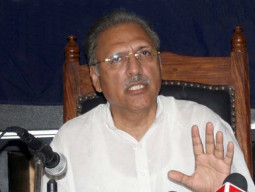
For the long run, Pakistan’s policymakers needed to develop an industrial strategy aimed at producing higher value-added export goods, it said. The argument presented by researchers was that it was the high GDP growth that caused the recurring balance of payments problem.
“The fundamental reason behind this is that there exists structural weakness in Pakistan’s economy in terms of composition of exports since a higher growth is accompanied by significantly higher imports, but only slightly higher exports,” they said.
“The reason for low export growth is that Pakistan is caught in a low value-added export production trap.”
Circular debt of Rs1.1tr passed on to new govt
Researchers found that there existed a balance of payments-constrained maximum growth rate in Pakistan of approximately 5%. “This means that every time the growth rate goes above 5%, the current account significantly deteriorates.”
The current account deterioration, they said, was historically caused by unsustainable level of high imports when growth rose above the 5% threshold.
Researchers also found that a change in the real exchange rate did not have a significant impact on the current account balance.
They presented some key policy recommendations. “First, with an effective exchange rate devaluation of approximately 20%, the overvaluation problem of the rupee has now been mostly resolved so there is little economic justification for further devaluation.”
It was also noted that because of inelasticity of imports and exports, the devaluation on its own would not solve the balance of payments crisis.
Second, only a sharp slowdown in growth caused by a significant fiscal (and potentially monetary) contraction will stabilise the current account in the short run.
Also, tariff increases on consumer goods, in particular luxury goods, should be strongly considered to slow the unsustainable influx of imports. In the long run, a well-defined industrial strategy is needed to help Pakistani manufacturers move from lower value-added exports to higher value-added exports.
Published in The Express Tribune, August 19th, 2018.
Like Business on Facebook, follow @TribuneBiz on Twitter to stay informed and join in the conversation.

1722586547-0/Untitled-design-(73)1722586547-0-165x106.webp)


1732326457-0/prime-(1)1732326457-0-165x106.webp)












COMMENTS (1)
Comments are moderated and generally will be posted if they are on-topic and not abusive.
For more information, please see our Comments FAQ